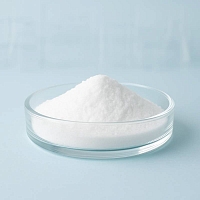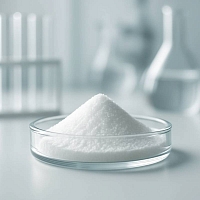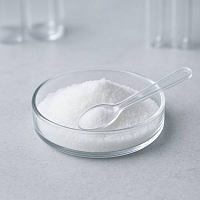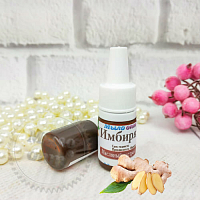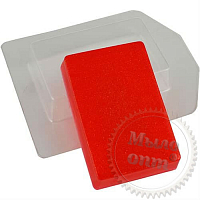-
 Absolutes
Absolutes
-
 Active Complexes
Active Complexes
-
 Actives and Peptides for Cosmetics
Actives and Peptides for Cosmetics
-
 Amino Acids
Amino Acids
-
 Food Flavorings
Food Flavorings
-
 Ayurveda
Ayurveda
-
 Vitamins
Vitamins
-
 Gelling Agents and Thickeners
Gelling Agents and Thickeners
-
 Hydrosols and Floral Waters
Hydrosols and Floral Waters
-
 Hydrolyzed Proteins
Hydrolyzed Proteins
-
 Fragrant and aromatic substances
Fragrant and aromatic substances
-
 Acids, Salts, Alcohols, and Alkalis
Acids, Salts, Alcohols, and Alkalis
-
 Preservatives and Antioxidants
Preservatives and Antioxidants
-
 Cosmetic Raw Materials
Cosmetic Raw Materials
-
 Dyes, Pearlescents, and Glitters
Dyes, Pearlescents, and Glitters
-
 Face Masks, Scrubs, and Dried Flowers
Face Masks, Scrubs, and Dried Flowers
-
 Oils, batters, macerates, oil mixtures
Oils, batters, macerates, oil mixtures
-
 Candle Supplies
Candle Supplies
-
 Melt and Pour Soap Bases
Melt and Pour Soap Bases
-
 Base for cosmetics, cream, serum, shampoo
Base for cosmetics, cream, serum, shampoo
-
 Fragrance Oils
Fragrance Oils
-
 Surfactants
Surfactants
-
 Peelings for Skin
Peelings for Skin
-
 Herbal Powders and Plant
Herbal Powders and Plant
-
 Silicones and Conditioning Surfactants for Hair
Silicones and Conditioning Surfactants for Hair
-
 Raw materials for dietary supplements
Raw materials for dietary supplements
-
 Packaging for Cosmetics and Perfumes
Packaging for Cosmetics and Perfumes
-
 Molds, Packaging, Tools
Molds, Packaging, Tools
-
 Organic Extracts
Organic Extracts
-
 Emollients for Cosmetics
Emollients for Cosmetics
-
 Emulsifiers
Emulsifiers
-
 Essential Oils
Essential Oils
Pyruvic Acid: Your Advanced Solution for Skin Renewal and Rejuvenation
Unlock the secret to radiant, blemish-free skin with our premium Pyruvic Acid, expertly sourced from Spain. This versatile liquid, ranging in color from yellow to light amber, is a powerful alpha-keto acid (AKA) also known as alpha-ketopropionic acid, pyruvate, or keto acid. Highly soluble in both water and esters, Pyruvic Acid offers unparalleled benefits for professional and at-home skincare, targeting a wide array of concerns from hydration and toning to severe acne and hyperpigmentation.
Description and Key Properties
Pyruvic Acid (INCI: Acidum pyroracemicum) is a unique and highly effective ingredient in the realm of aesthetic dermatology and cosmetic formulation. Its small molecular size allows for excellent skin penetration, delivering potent effects with remarkable versatility. Unlike AHAs (Alpha Hydroxy Acids), Pyruvic Acid possesses both lipophilic and hydrophilic properties, allowing it to work effectively on both the surface and deeper layers of the skin.
Key properties and benefits:
- Multi-Level Exfoliation: Provides effective superficial to medium-depth exfoliation, depending on the concentration. It helps shed dead skin cells, promoting a smoother and brighter complexion.
- Sebum Regulation & Acne Treatment: Its lipophilic nature makes it highly effective in dissolving sebum and penetrating oil glands, making it excellent for treating acne, reducing breakouts, and minimizing post-acne marks.
- Collagen & Elastin Stimulation: Pyruvic acid stimulates the production of collagen and elastin, crucial proteins for maintaining skin's firmness and elasticity. This contributes to anti-aging effects, reducing the appearance of fine lines and improving skin turgor.
- Pigmentation Correction: Highly effective in reducing hyperpigmentation, including dark spots and freckles, by inhibiting melanin synthesis and promoting faster cell turnover.
- Hydration & Barrier Support: At lower concentrations, it enhances skin hydration by improving its ability to retain moisture, leading to softer, more supple skin and a strengthened skin barrier.
- Antimicrobial & Anti-inflammatory: Possesses mild antimicrobial properties that can help prevent bacterial growth on the skin, and it also aids in reducing inflammation and redness.
Versatile Applications and Usage Areas
Pyruvic Acid is an incredibly versatile active ingredient, widely used in professional dermatological settings and increasingly in advanced home care formulations. (Note: Not for use in candles).
- For Skin Rejuvenation and Hydration:
- Moisturizing Cosmetics (0.5-2%): Incorporated into creams and lotions to enhance skin hydration, prevent dryness, and improve overall texture, making skin feel soft and smooth.
- Cosmetics for Dry Skin (1%): Provides gentle exfoliation and boosts moisture retention, addressing flakiness and discomfort in dry skin types.
- Skin Toning & Turgor Enhancement (1.5%): Used in toners and serums to improve skin firmness, elasticity, and overall tone, giving a more youthful and revitalized appearance.
- For Acne, Blemish, and Pigmentation Treatment:
- Acne Treatment & Post-Acne Marks (0.5-2%): Essential in formulations targeting acne breakouts, reducing inflammation, and accelerating the fading of stubborn post-acne spots.
- Pigmentation Spots & Freckles (2%): Highly effective in specialized creams and serums designed to visibly lighten dark spots, freckles, and other forms of hyperpigmentation for a more even complexion.
- Treatment of Hyperkeratosis (1-2%): Helps to normalize skin cell turnover in conditions like hyperkeratosis, where there is an excessive buildup of dead skin cells.
- For Cleansing and Hair Care:
- Foaming Cleansers for Skin and Hair (1.5-2%): Provides gentle exfoliation and helps to regulate sebum production in facial cleansers and shampoos, contributing to clearer skin and healthier scalp/hair.
- Professional Treatments (Monopeel):
- Monopeeling (5-50% - Professional Use Only): At higher concentrations, Pyruvic Acid is used in professional chemical peels, allowing for a range of peeling depths from superficial to medium. These treatments are highly effective for severe acne, significant hyperpigmentation, fine lines, and overall skin resurfacing, requiring application by a trained professional.
Cosmetic Recipe: "Clear & Bright" Anti-Acne & Pigmentation Serum
Create an effective serum targeting acne, post-acne marks, and pigmentation with Pyruvic Acid, suitable for home use at a gentle yet effective concentration.
| Ingredient | Percentage (%) | Function |
|---|---|---|
| Phase A (Aqueous Phase) | ||
| Distilled Water | Up to 100% (approx. 90.5%) | Base of the serum |
| Glycerin | 3% | Humectant, draws moisture to the skin |
| Xanthan Gum (or other gelling agent) | 0.2% | Gelling agent, provides texture and stability |
| Phase B (Active Phase - Add below 40°C) | ||
| Pyruvic Acid | 2% | Exfoliates, treats acne, reduces pigmentation |
| Niacinamide (Vitamin B3) | 3% | Anti-inflammatory, minimizes pores, improves barrier |
| Panthenol (Vitamin B5) | 1% | Soothes, moisturizes, promotes healing |
| Preservative (e.g., Liquid Germall Plus) | 1.3% | Protects against microbial growth |
Instructions for Preparation:
- Sanitization: Thoroughly sanitize all your equipment (beakers, stirring rods, serum bottles) with isopropyl alcohol and allow them to air dry completely.
- Prepare Phase A (Aqueous Phase): In a clean beaker, disperse xanthan gum into glycerin, stirring well to form a lump-free slurry. This helps prevent clumping when adding to water.
- Form the Gel (Phase A): Slowly add the distilled water to the glycerin/xanthan gum slurry while continuously stirring with a mini-mixer or whisk until a clear, homogeneous gel forms. This might take a few minutes.
- Cool Down: Allow the gel to cool to below 40°C (104°F). This is crucial for adding heat-sensitive active ingredients.
- Add Phase B (Active Phase): Once the gel has cooled, slowly add the Pyruvic Acid, niacinamide, and panthenol to the gel, stirring well after each addition to ensure complete dissolution and even distribution.
- Add Preservative: Finally, add your chosen preservative. Stir thoroughly for at least 1-2 minutes to ensure it is fully incorporated.
- Check pH: Crucially, check the pH of your finished serum. For home-use products containing Pyruvic Acid, the pH should ideally be 3.0-4.0 to ensure effectiveness and safety. Use pH strips or a pH meter. If the pH is too low, add a tiny drop of diluted sodium bicarbonate solution; if too high, add a tiny drop of diluted lactic acid or citric acid. Adjust very slowly, as small amounts can cause significant changes.
- Bottle: Carefully transfer the finished serum into a clean, sterile serum bottle with a dropper or pump.
Recommendations for Application and Use:
- Dosage of Pyruvic Acid: The 2% concentration in this recipe is suitable for regular home use. For localized spot treatment or if your skin tolerates it well, you might consider up to 5% for professional use, but always exercise caution and start low.
- pH Adjustment is Critical: Maintaining the correct pH is paramount for the safety and efficacy of Pyruvic Acid products. An incorrect pH can lead to irritation or render the product ineffective.
- Application: Apply 2-3 drops of the serum to clean, dry skin on affected areas (face, chest, back) 2-3 times per week, gradually increasing frequency if well-tolerated. It's often recommended for evening use.
- Sun Protection is NON-NEGOTIABLE: Pyruvic Acid, like other exfoliants, increases skin's sensitivity to the sun. Always apply a broad-spectrum SPF 30 or higher daily when using products containing Pyruvic Acid, even on cloudy days or indoors.
- Patch Test: Always perform a patch test on a small, inconspicuous area of skin (e.g., behind the ear or on the inner arm) 24-48 hours before full application to check for any sensitivities or allergic reactions.
- Potential Irritation: Expect a mild tingling sensation upon initial application. If significant burning, redness, or irritation occurs, discontinue use immediately.
- Storage: Store the finished serum in a cool, dark place, away from direct sunlight, to maintain its stability and efficacy. The preservative ensures microbial stability.
- Not for Sensitive Skin (High Concentrations): While lower concentrations (0.5-1%) can be used for sensitive skin with caution, higher concentrations should be avoided for very sensitive or compromised skin. Consult a dermatologist for professional guidance on higher concentrations or severe conditions.
And also go to the Blog from Мыло Опт, where we share useful information about creating the right natural cosmetics
| INCI | Acidum pyroracemicum | |
| Other | ||
| Color product | from yellow to light amber | |
| Descriptio smell | characteristic | |
| Features | All information presented on the site is for reference only | |
| Input percentage | увлажняющая косметика — 0,5-2%, пеномоющие средства для кожи и волос —1,5-2%, косметика для сухой кожи — 1%, тонизирование кожи, усиление тургора — 1,5%, монопилинг — 5-50% (профсредства), косметика от пигментных пятен и веснушек — 2%, лечение угревой сыпи, пятен постакне — 0,5-2%, лечение гиперкератоза — 1-2% | |
| Minimum count | 1 | |
| Name | Pyruvic Acid 100 g | |
| Packaging | container for transportation | |
| Packing | 100 grams | |
| Solubility | water, ethers | |
| View | liquid | |
| Valid until | 10.2026 | |
-
Date:todayAuthor:Иванна, НантReviews
Олія жожоба з цього магазину ідеально підходить для моєї жирної шкіри. Вона регулює вироблення себуму та зволожує.









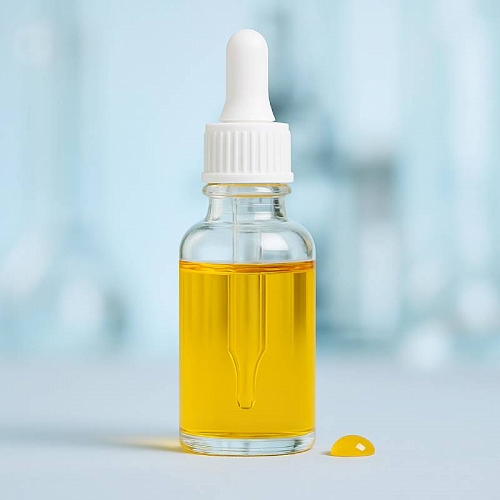
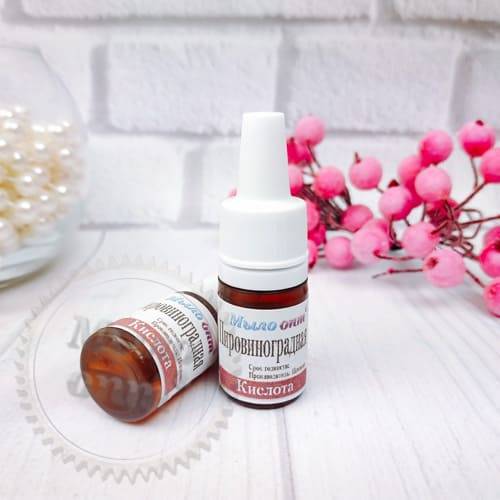


 Add to cart
Add to cart Buy in 1 click
Buy in 1 click

 Add a review
Add a review To favorites
To favorites To compare
To compare





